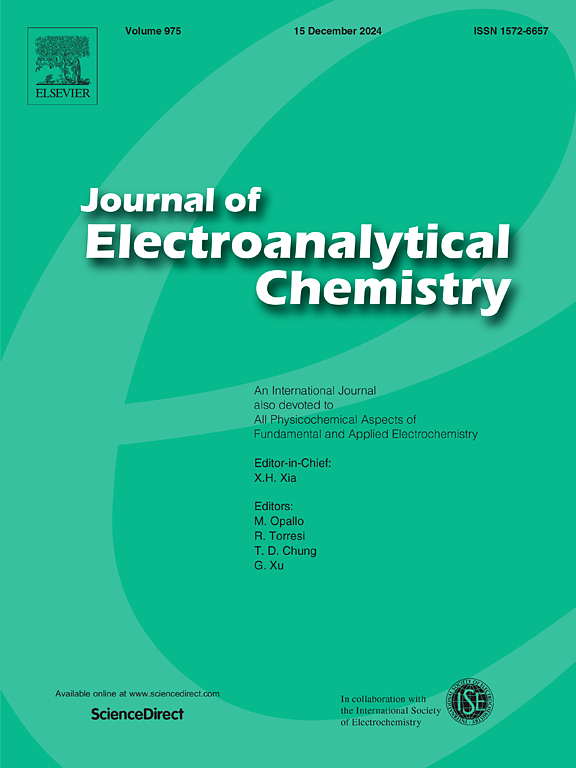PtNi nanoparticles embedded in Ni-MOF-on-Zn-MOF derived carbon nanosheets for enhanced hydrogen evolution
IF 4.1
3区 化学
Q1 CHEMISTRY, ANALYTICAL
引用次数: 0
Abstract
The hydrogen evolution reaction (HER) is a crucial step in water electrolysis with significant potential for converting intermittent renewable energy into storable hydrogen fuel. Metal-organic framework (MOF) derived metal‑carbon nanomaterials have garnered considerable attention as prominent HER electrocatalysts. In this work, we introduce ultrafine PtNi particles embedded in Ni-MOF-on-Zn-MOF-derived N-doped carbon materials, designated as NZBD-PtNi-NC. Benefiting from their large specific surface area, well-defined porous structure, and tunable chemical composition, the obtained NZBD-PtNi-NC exhibits a low overpotential of 51 mV at 10 mA cm−2 and demonstrates high stability exceeding 30 h. The synergistic alloying of Pt and Ni not only boosts catalytic efficiency but also reduces Pt consumption, thereby enhancing the overall economic viability of the catalyst. These findings underscore the potential of MOF-derived low-loading precious metal-based carbon nanomaterials as highly efficient and stable electrocatalysts for HER.
氢进化反应(HER)是水电解过程中的一个关键步骤,具有将间歇性可再生能源转化为可储存氢燃料的巨大潜力。金属有机框架(MOF)衍生的金属碳纳米材料作为突出的氢进化反应电催化剂已引起了广泛关注。在这项工作中,我们引入了嵌入 Ni-MOF-on-Zn-MOF 衍生 N 掺杂碳材料(命名为 NZBD-PtNi-NC)中的超细铂镍颗粒。铂和镍的协同合金化不仅提高了催化效率,还降低了铂的消耗,从而提高了催化剂的整体经济可行性。这些发现强调了 MOF 衍生的低负载贵金属基碳纳米材料作为高效、稳定的 HER 电催化剂的潜力。
本文章由计算机程序翻译,如有差异,请以英文原文为准。
求助全文
约1分钟内获得全文
求助全文
来源期刊
CiteScore
7.80
自引率
6.70%
发文量
912
审稿时长
2.4 months
期刊介绍:
The Journal of Electroanalytical Chemistry is the foremost international journal devoted to the interdisciplinary subject of electrochemistry in all its aspects, theoretical as well as applied.
Electrochemistry is a wide ranging area that is in a state of continuous evolution. Rather than compiling a long list of topics covered by the Journal, the editors would like to draw particular attention to the key issues of novelty, topicality and quality. Papers should present new and interesting electrochemical science in a way that is accessible to the reader. The presentation and discussion should be at a level that is consistent with the international status of the Journal. Reports describing the application of well-established techniques to problems that are essentially technical will not be accepted. Similarly, papers that report observations but fail to provide adequate interpretation will be rejected by the Editors. Papers dealing with technical electrochemistry should be submitted to other specialist journals unless the authors can show that their work provides substantially new insights into electrochemical processes.

 求助内容:
求助内容: 应助结果提醒方式:
应助结果提醒方式:


